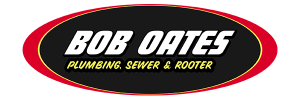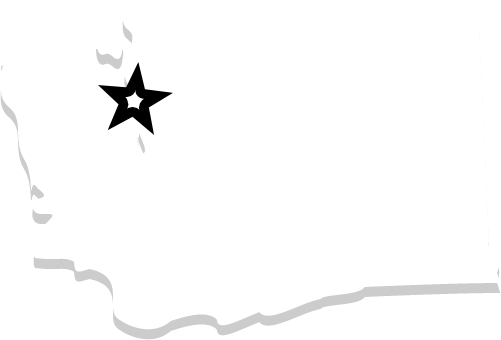How to Fix a Broken Sewer Pipe Under the House: Everything You Need to Know
CALL (206) 789-4944
Serving the Greater Seattle Area

Dealing with a broken sewer pipe under your house is frustrating. It is a problem that requires immediate attention to prevent damage and minimize health hazards. But do you know how to fix a broken sewer pipe under the house?
Fortunately, long gone are the days when your only sewer line repair options included digging up your property and shutting down your plumbing for days. While this may be the only option for some repairs, newer methods eliminate or minimize excavation and save your yard.
Before learning how to fix a broken sewer pipe under your house, you’ll want to recognize what causes sewer line problems and the signs of when you need a drainage pipe repair. That way, you’ll know when to call a professional to fix the sewer leak under your house.
Common Causes of Sewer Lines Breaking
Understanding what causes a cracked sewer pipe under a house is crucial for knowing how to protect your plumbing system. Old pipes and natural wear and tear are only two contributing factors.
Tree Roots
Tree roots infiltrating into our side sewers and causing backups, flooding, leading to repairs or entire replacements are one of the biggest problems for homeowners in homes all across America.
An invasive tree root is one of the most underestimated causes of broken sewer pipes. Trees constantly look for moisture, making sewer pipes an attractive option. Even the slightest crack in the drain allows the root to exploit the opening and penetrate the pipes. As the roots grow, they place pressure on the pipe and cause it to fracture and leak.
Poor Soil
The quality of soil surrounding your drainage pipes affects their lifespan. Soil containing expansive clay or a high acid content contributes to sewer line leaks, as the clay swells and contracts with moisture changes. The expansion and contraction put pressure on the pipes and create structural stress. Additionally, highly acidic soil causes the pipe material to rust over time.
Old Pipes
Old sewer lines made from cast iron, concrete or terracotta are susceptible to deterioration and leaks and all sewer pipes have a manufacturer’s life expectancy. Metals rust and corrode over time, while here in the great PNW our common concrete sewer pipes and downspouts simply crumble and the bottom of the pipe can “wash away” after 60 years of continued use! Even terracotta or clay pipes are vulnerable to leaks, cracks and root infiltration. Homes built before the 1970s typically contain outdated pipe materials, and it is recommended that these pipes get replaced, even if they are not damaged. A sewer camera inspection will show the wear and tear and usually will answer any questions.
Clogs
Dumping oil, grease, and fats into your pipes causes these materials to build up and reduce the area where waste flows through. Paper towels, “flushable wipes,” and excessive toilet paper contribute to this buildup, leaving no room for waste.
The clogs put pressure on the sewer line, causing it to crack and break. You can prevent clogs from forming by only sending water, toilet paper, and bodily waste down your bathroom drains. Sadly, even disposals contribute to buildup in older drain pipes, especially if they are not at least 2” in diameter.
Natural Disasters
Natural disasters like earthquakes, tornadoes, and floods can cause sewer lines to rupture or crack, either by direct damage to the pipes or because of the shifting earth. As such, your plumbing should be inspected after significant natural disasters to ensure your sewer lines are not damaged.
Signs of a Broken Sewer Pipe Under House
Broken sewer pipe repair can cost thousands of dollars. That’s why you must understand the signs of a damaged drain sewer line. When you notice any of these issues, contact a sewer repair professional who knows exactly how to fix a broken drain pipe underground.
Wet Grass Around Exterior Walls
Soggy areas inside your home, especially the exterior walls, may indicate a drain line problem. If it hasn’t recently rained, you shouldn’t notice puddles accumulating around your foundation. Moisture buildup from a broken sewer pipe can be one of the causes of these wet spots and requires the attention of a certified plumber who knows how to fix a cracked sewer pipe. If it has rained it could be a clogged downspout causing the moisture inside or around your home.
Wet or Damp Carpet
Your sewer and drain lines move underneath your house with a series of pipes that link to the main sewer line. As water accumulates around the connections, it causes the interior basement flooring to become wet, causing the formation of mold and mildew. This grungy excess water can wreak havoc on your floors and create nasty, bacteria-filled odors. Once the leak is repaired, you’ll need a professional floor cleaner to deodorize, sanitize, and dry your flooring. This can lead to health issues and structural damage if not addressed promptly. A camera inspection can determine if you have a clogged or cracked sewer or drain.
Musty Odors
Unpleasant, musty odors in your home are often caused by mold and mildew developing in moist areas. Cracked and leaking sewer lines create the perfect environment for many bacteria to grow. You likely have a sewer leak if you have a musty smell or something akin to a dead animal odor (decomposing) or methane/sulfur odor with an unidentifiable source. Call a plumber immediately to schedule a repair and stop the mold growth and foul air quality before it worsens.
Slow-Draining Showers, Sinks, and Toilets
Hair, food, and other debris easily create blocked drains. A slow drain may be caused by a developing blockage that eventually causes a sewer backup. However, when you cannot clear the line on your shower, sink, or toilet, you may have a more extensive problem, like a root intrusion or cracked pipe.
Signs of Structural Damage in Your Home
When dealing with a broken sewer pipe, the structural integrity of your home should be a concern. Keeping alert for signs of structural damage can prevent minor problems from evolving into potentially dangerous situations that lead to costly repairs.
Cracks in Walls Spreading Upward From the Ground
Concrete is a rigid material, meaning a few cracks may appear as your house naturally settles. However, large cracks in the walls that travel upward from the ground indicate structural damage. In these cases, your foundation needs repair in addition to the sewer pipe that contributed to the structural damage.
How to Fix Broken Sewer Pipes Under House
Depending on what your plumber finds, you may have a few options for fixing a broken sewer pipe under your house. Two primary options not requiring ripping up your lawn are pipe lining and pipe bursting. These are also known as trenchless sewer repairs.
Open Trench Excavation
Open trench sewer pipe repair requires much more digging than trenchless sewer pipe repair methods. It also requires more time and staffing to get the job done. This method is the better repair option when the pipe repair is under 10 feet, and you don’t mind digging a trench in your yard.
Before digging begins, gas, water, electrical, and telephone utility lines must be located. These areas are marked to ensure they are not damaged while replacing your pipe.
When plumbers use this technique, they must dig approximately two feet around the sides of your old pipe to remove it from the connection leaving your home. Before installing the new pipes, the team places shoring boards in the trench to prevent collapse.
Pipe Lining
Our preferred method of trenchless sewer pipe repair is pipe lining. A free camera inspection confirms that pipe lining is right for your home or business. This method is the most cost-effective solution for our customers here at Bob Oates. It takes less time and causes less disruption to your home and lifestyle than traditional open trench or pipe bursting. Rest assured, we know what we’re talking about — we’re the leader in the pipe lining business in Seattle, with over 30 years experience installing and standing behind all work we do!
The pipe lining process is straightforward. We install an epoxy coated felt “sleeve” (or liner as it’s called) into the existing old pipe and inflate a rubber bladder which conforms to the inside of the old pipe, creating a pipe within a pipe. This may be an oversimplification of the process, but it’s accurate! It’s the most common repair method and depending on the size and length can be completed in 1 day due to UV curing of the epoxy.
The result? You’ll be up and running with little or no down time. In most cases, this process can be completed in small 1½” pipes to much larger 6”, 8”, 12” or even 36” culvert drain pipes! The method can be used in many different applications — we have lined 22” heating duct systems under homes, storm drain systems under roads and infrastructure inside of food processing plants.
Pipe Bursting
Pipe bursting is another trenchless sewer repair method. This technique involves breaking and expanding the existing pipes while replacing them with new ones. Although it may sound invasive, it also minimizes the damage to your yard.
This trenchless method uses a hydraulic machine with a large cone-shaped head to burst the old pipes below the ground. As it breaks apart the old pipe, it pulls a new pipe through it. The process is repeated until the entire length of the broken line is replaced. It is a faster and more efficient method than traditional open trench pipe repairs, especially when you need to go under a rockery, building, or other structure using HDPE solid pipe vs a liner.
Pipe bursting is just another solution to sewer pipe repair and replacement; we can assess and recommend the best pipe repair or replacement option that fits your needs and budget. The process requires our repair team to dig two small holes at either end of the sewer in order to insert a cable and feed it through the pipes. One end of this cable is attached to a pneumatic jack, while the other connects to the cone-shaped head.
As we mentioned, the new pipe is pulled through the old pipe, bursting it in place with a new HDPE sewer pipe. Once the new pipe is inserted, the plumber ensures everything works correctly and does a camera inspection. We then backfill the access holes.
Unfortunately, there is no way to remove the old pipe. The pieces will remain in the ground surrounding the newly installed line. However, those old pieces of pipe will not interfere with the new sewer line.
Call in the Professionals with Bob Oates
Replacing broken sewer lines is never near the top of anyone’s desired list of things to do. Except ours! Protecting your family’s health and your home’s foundation is necessary, and we’re here to help. Fortunately, repairing broken drain lines is not the hassle it used to be.
The trick to successfully repairing these pipes is to consult an expert with the knowledge and experience to provide you with the best repair strategy.
Bob Oates Sewer & Rooter is your local sewer pipe repair specialist. Our team offers prompt service and vast information about your plumbing and sewer pipes. We use high-quality materials and equipment to complete every job. Our skilled technicians continually train and learn about today’s advanced technology so we can provide the most efficient and effective solutions for all your plumbing and sewer repair needs.
Trust Bob Oates to take on your plumbing and sewer needs and get the job done right the first time. Experience unparalleled customer support, access to the latest technology, and the expertise of our seasoned professionals. Quality and reliability are always guaranteed.
Contact us today to get your appointment on the books or learn more about our drain line repair services.
CALL (206) 789-4944
Serving the Greater Seattle Area





